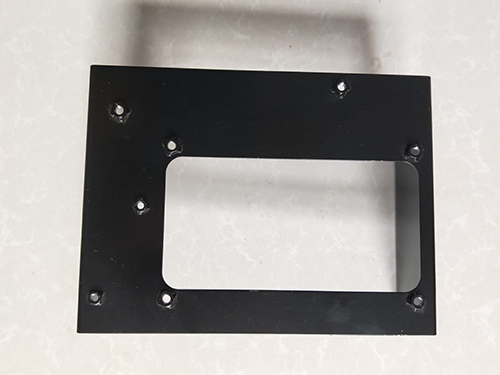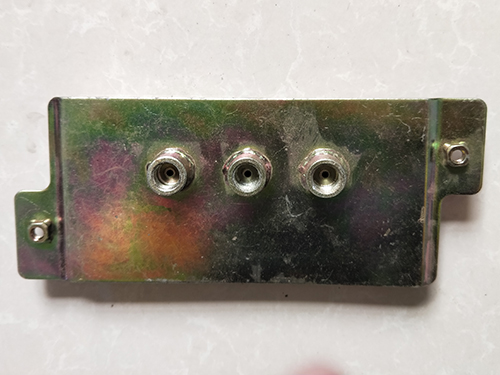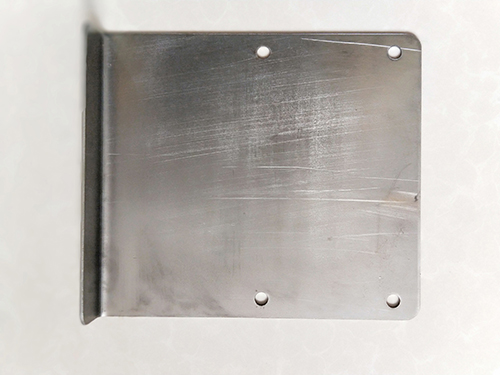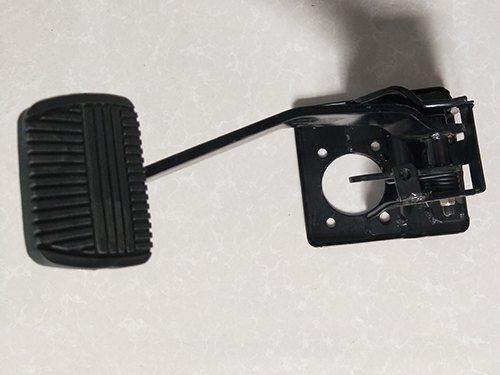Maintenance precautions and optimization solutions for metal stamping parts
Many people know that in the production of metal stamping molds, it is necessary to maintain and carefully inspect the machines in order to improve the lifespan of the molds and thus increase production efficiency. So next, we will mainly understand the four maintenance precautions for metal stamping continuous molds.
1、 Maintenance of convex and concave molds
1. When disassembling convex and concave molds, attention should be paid to the original condition of the mold for easy restoration during subsequent mold installation; If there is padding or displacement, the thickness of the gasket should be engraved on the part and recorded.
2. When replacing the convex mold, it is necessary to test whether the insertion and removal block of the concave mold are smooth, and whether the gap between the insertion and the concave mold is uniform; When replacing the concave mold, it is also necessary to test whether the gap between the insertion and the punch is uniform.
3. Regarding the need to add shims to achieve the required length for the shortened convex mold after grinding, it is necessary to check whether the length of the convex mold is sufficient. To replace a broken convex mold, the cause should be identified, and the corresponding concave mold should be checked for any broken edges and whether grinding of the edges is necessary.
4. When assembling the convex mold, it is necessary to check whether the gap between the convex mold and the fixed block or plate is sufficient, and if there is a pressure block, it is necessary to check whether there is enough clearance left. The assembled concave mold should be placed horizontally, and then a flat iron block should be placed on the surface of the concave mold. It should be lightly tapped into place with a copper rod, and it should not be knocked in diagonally. The bottom of the concave mold should be chamfered. After installation, check whether the concave mold surface is flat with the mold surface.
5. After the assembly of the convex mold, concave mold, and mold core is completed, the care belt should be inspected to ensure that all parts are installed correctly or in reverse. Check whether the concave mold and concave mold cushion block are installed in reverse, whether the feeding hole is blocked, whether new parts need to be stolen, whether there is enough need for stealing, and whether the parts of the mold that need to be locked are locked.
6. Pay attention to the confirmation of the locking of the stripping plate screws. When locking, it should be done from the inside out, with balanced force and cross locking. Do not lock one screw first and then lock another screw to avoid tilting the stripping plate, causing the convex mold to break or the mold accuracy to decrease.
2、 Maintenance of the stripping plate
1. The disassembly of the stripping plate can be balanced and lifted with two screwdrivers first, and then balanced with both hands to remove the force. When encountering difficulties in disassembly, it is necessary to check whether the inside of the mold is clean, whether all locking screws have been removed, whether the mold damage is caused by material jamming, identify the cause and take corresponding measures. Blind disposal is not allowed.
2. When assembling the stripping plate, first clean the convex mold and stripping plate, add lubricating oil to the guide column and convex mold inlet, place them steadily, then press them in place with both hands and repeat several times. If it is too tight, the cause should be identified (whether the guide column and guide sleeve are normal, whether there is damage to each part, whether the new convex mold can pass through the stripping plate smoothly, and whether the position is correct), and then corresponding treatment should be taken.
3. If there are pressure blocks on the fixed plate, it is necessary to check whether the clearance on the backing plate is sufficient. The material contact surface between the stripping plate and the concave mold may experience pressure marks during long-term stamping. When the pressure marks are severe, it can affect the accuracy of material compression and cause abnormal and unstable product dimensions. It is necessary to repair or re grind the stripping insert and stripping plate.
4. The sleeve should be checked for accuracy when it is not high, as it can cause the detachment plate to tilt and its guiding and stable elastic pressure function to be damaged, requiring maintenance.
3、 Adjustment of die clearance
1. The positioning holes of the mold core are worn out due to frequent and multiple combinations of the mold core, resulting in large gaps (loosening after assembly) or uneven gaps (positioning deviation), which can cause the cross-sectional shape to deteriorate after punching, the convex mold to break easily, and burrs to occur. By checking the cross-sectional condition after punching, appropriate gap adjustments can be made.
2. When the gap is small, there are fewer cross-sections, and when the gap is large, there are more cross-sections and larger burrs. To obtain a reasonable gap, displacement is used. After adjustment, appropriate records should be made, and marks can also be made on the edge of the concave mold for subsequent maintenance operations.
3. In daily production, attention should be paid to collecting and preserving the raw material strip in the best condition of the mold. If the subsequent production is not smooth or the mold has variations, it can be used as a reference for mold maintenance.
4. In addition, auxiliary systems such as the top material pin should be checked and maintained for wear and tear, whether they can top the material, and whether the guide nail and liner are worn.
To optimize the brake pedal feel of a sedan, it is necessary to identify the influencing factors and take measures to improve and optimize them based on experiments to reduce their impact on the brake pedal feel. After studying the relationship between car brake pedal force, car brake pedal stroke, and vehicle speed reduction, it was found that when the vehicle brake stroke meets the braking demand conditions (such as the car brake pedal force being lower than the lower limit requirement), the car needs to use a large pedal force during braking, which makes the driver feel that the braking is soft during driving. The feeling of the brake pedal for a sedan can be determined by the braking efficiency of the sedan. The following optimization scheme can be adopted for the overall braking efficiency of the sedan: increasing the cylinder diameter of the front caliper while increasing the radius of the front brake of the sedan. Under the above changes, in order to match the front and rear brakes, the radius of the rear brake of the vehicle should also be increased. After adopting the above optimization scheme to modify the vehicle braking system, although there is no significant change in the brake pedal stroke of the car after the modification, the brake pedal force of the car has a significant decrease compared to the force required to step on the pedal during the original car braking. In addition to improving the braking efficiency of the car, optimizing the parameters of the vacuum booster can also be used to optimize the feel of the car's brake pedal. By adjusting and optimizing the assist ratio of the vacuum booster during the process of improving the vacuum booster, the output pressure of the vacuum booster can be increased under stable input force conditions. This means that the pressure of the car's brake system pipeline can be increased without changing the force of the car's brake pedal, allowing the car to achieve deceleration at a fast speed. In addition to adjusting the assist ratio of the vacuum booster, the feeling of the car brake pedal can also be adjusted by adjusting the initial force and jump value of the vacuum booster. In this adjustment process, reducing the initial force of the car brake can lower the initial pedal force of the car brake, thereby improving the initial pedal feeling of the car brake and laying a good foundation for the later brake pedal feeling of the car. After calculating and analyzing the braking system of the test vehicle, combined with the manufacturing capacity of current car vacuum boosters, it is more suitable to control the initial force of the vacuum booster within the range of 40N-70N. By increasing the jump value, the initial pipeline pressure of the oil pipeline can be increased, laying a good foundation for the initial braking deceleration that the car can obtain during braking, thereby optimizing the feeling of the car's brake pedal. However, for the range of the jump value increase, if it exceeds this range, it will form a two-stage feeling on the car's brake pedal, which makes it easy to form a poor control pedal feeling when the deceleration is too high in the early stage of stepping on the brake pedal to brake the vehicle. Research experiments have shown that controlling the jump value within the range of 17-23 bar can easily improve the car's brake pedal feeling. Based on the analysis of the pedal force and the deceleration curve of the vehicle, the assist ratio of the vehicle vacuum booster was increased from 6.0 to 7.5, the initial force was controlled within the range of 40N-70N, and the jumping value of the vacuum cleaner was controlled within the range of 17-21bar. After testing the feeling of the car brake pedal, it was found that after adjusting the key parameters of the vehicle vacuum booster, the brake pedal stroke of the car did not change compared to the original, and the brake pedal force of the car showed a good trend, and one of the trends was more obvious. Although this trend was not significantly affected by the adjustment of the car brake efficiency scheme, the required car brake pedal force under the same braking and deceleration conditions also had a significant effect. Compared to before the improvement, there has been a significant improvement in the brake pedal feel of the sedan. In addition to the two optimization schemes for the brake pedal feel of cars mentioned above, measures can also be taken to optimize the brake pedal feel of cars by adjusting the vacuum degree of the car engine, the stiffness of the pedal and wall, and the stiffness of the vacuum booster. However, when choosing which optimization method to use, it should be noted that some optimization schemes for the brake pedal feel of cars can achieve good brake pedal feel, but they have improved in other aspects such as car wear, reduced service life of spare parts, and vehicle maintenance, which affects the overall use effect of the vehicle. Therefore, when choosing the optimal solution for optimizing the feel of the car brake pedal, it is necessary to comprehensively consider the balance from the overall perspective to ensure the stability of the car brake system.







